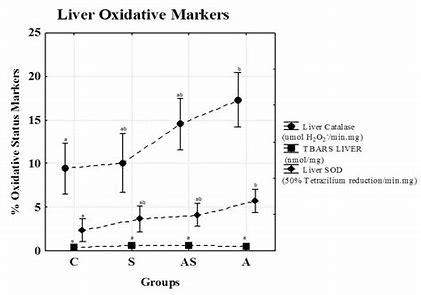有氧运动和力量运动都可以减重 降脂 改善脂肪肝和增强身体的抗氧化功能
背景
肥胖患病率的增加会给政府带来巨大的开支。体育锻炼是对抗肥胖和肥胖相关疾病的有力工具。本研究试图确定三种不同的运动方案对成年Wistar大鼠代谢综合征和脂质过氧化标志物及抗氧化酶活性的影响(120天)。
方法
动物被随机分为四组:
对照组(C)组在整个研究过程中保持久坐不动;
有氧组(A)每天游泳1小时,每周5天,80%乳酸强度;力量组(S)进行力量训练,4次连续10次跳跃,每周5天;
并混合组(AS)每周使用3天的有氧运动和每周2天的力量运动进行训练。
结果
A组和S组与c组相比体重下降,所有运动的动物脂肪组织和肝脏的甘油三酯浓度降低。运动的动物也表现出脂质过氧化标记(TBAR)的减少和血清超氧化物歧化酶活性的增加。A组动物肝过氧化氢酶和超氧化物歧化酶活性升高。
结论
我们的结论是,所有的运动都改善了动物的抗氧化系统,降低了被调查组织中甘油三酯的储存。
https://s.click.taobao.com/alC3ZMw
https://s.click.taobao.com/31F3ZMw
参考文献:
Different exercise protocols improve metabolic syndrome markers, tissue triglycerides content and antioxidant status in rats | Diabetology & Metabolic Syndrome | Full Text https://dmsjournal.biomedcentral.com/articles/10.1186/1758-5996-3-35
José D BotezelliEmail author, Lucieli T Cambri, Ana C Ghezzi, Rodrigo A Dalia, Pedro P M Scariot, Carla Ribeiro, Fabrício A Voltarelli and Maria AR Mello
Diabetology & Metabolic Syndrome20113:35
https://doi.org/10.1186/1758-5996-3-35© Botezelli et al; licensee BioMed Central Ltd. 2011
Received: 22 September 2011Accepted: 19 December 2011Published: 19 December 2011
Abstract
Background
An increase in the prevalence of obesity entails great expenditure for governments. Physical exercise is a powerful tool in the combat against obesity and obesity-associated diseases. This study sought to determine the effect of three different exercise protocols on metabolic syndrome and lipid peroxidation markers and the activity of antioxidant enzymes in adult Wistar rats (120 days old).
Methods
Animals were randomly divided into four groups: the control (C) group was kept sedentary throughout the study; the aerobic group (A) swam1 h per day, 5 days per week, at 80% lactate threshold intensity; the strength group (S) performed strength training with four series of 10 jumps, 5 days per week; and the Concurrent group (AS) was trained using the aerobic protocol three days per week and the strength protocol two days per week.
Results
Groups A and S exhibited a reduction in body weight compared to group C. All exercised animals showed a reduction in triglyceride concentrations in fatty tissues and the liver. Exercised animals also exhibited a reduction in lipid peroxidation markers (TBARS) and an increase in serum superoxide dismutase activity. Animals in group A had increased levels of liver catalase and superoxide dismutase activities.
Conclusions
We concluded that all physical activity protocols improved the antioxidant systems of the animals and decreased the storage of triglycerides in the investigated tissues.
.png)
.png)




.png)